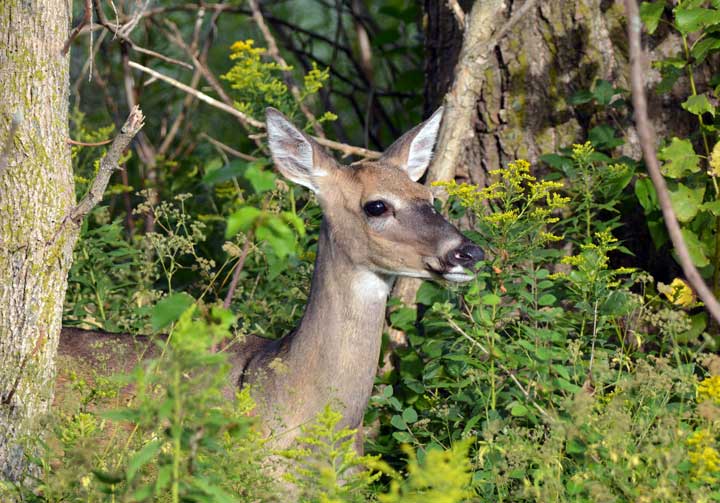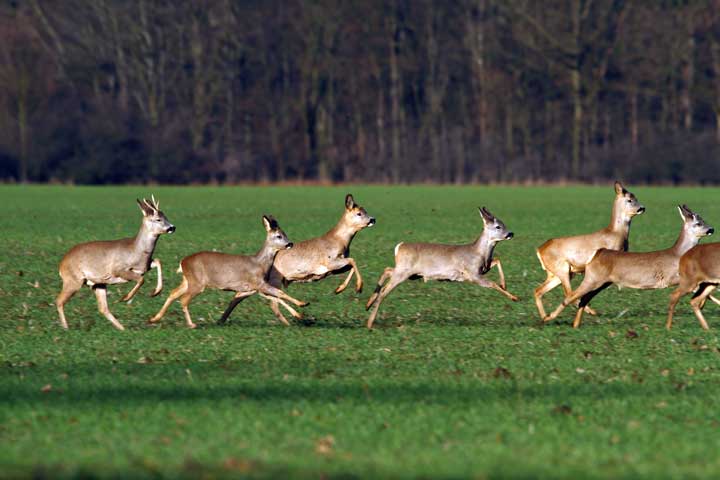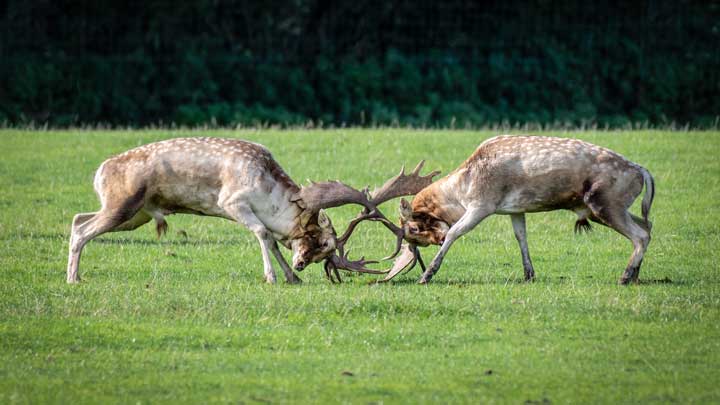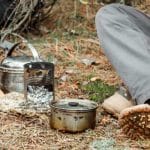It may seem odd to think that windy conditions are actually good for deer hunting. There always seem to be debates about whether deer move in the wind or tend to stay put. You can go out and ask all the hunters you know, and they’ll probably claim that deers don’t move in the wind.
In this post, I’ll stick to the laws of nature and avoid any conventional hunter wisdom when explaining deer activity on windy days.
Understanding the Lifestyle of Deer
Unlike humans, deer tend to be more active when the weather isn’t calm. Humans usually stay put or seek shelter in adverse weather conditions and prefer to wait out the storm. Deer, however, move around quite a lot during windy conditions.
For starters, their metabolism allows them to be more resilient to cold weather than humans. What’s more, their coat provides them with enough warmth to comfortably do their deer business where humans would be shivering until there’s no tomorrow. Since we tend to avoid going out to hunt when the weather is a bit rough, it’s easy to think that all wildlife do the same.
Like other animals in the wild, deer can sense a storm coming days out. Professional deer hunters observe that deer sometimes increase their activity up to three days before a massive rainstorm. The ambitious hunters can take advantage of this period and make a good hunt out of it.

How Do Deer Behave In Windy Weather?
Above, we mention that a moderate breeze or rain doesn’t seem to affect a deer’s day-to-day life. Since their biology allows them to thrive while it’s windy or raining, they’ll continue to look for food and take care of their nesting areas.
However, deer may not move around too much during heavy winds. Since deer rely on their sense of smell and hearing to detect predators, strong winds can hinder their senses and put them in danger. When the wind is rustling the foliage, it’s far easier for a predator to sneak up on the deer undetected. However, if the wind is light and coming from a single direction, there’s no reason why deer movement wouldn’t be normal.
What’s more, the same light winds can prevent predators from smelling and hearing the deer, which allows them to find their food source without alerting nearby predators.
However, there are a few things you want to consider about deer movement when hunting in the wind. If you’re a bowhunter, you’ll need to pay attention to the wind direction and line up your shots accordingly. Otherwise, you could find yourself with an extremely unethical harvest.
Do Deer Move Upwind or Downwind?
Deer don’t necessarily choose to travel upwind or downwind. Mature bucks tend to travel upwind if they’re following their nose. However, some bucks and does may go downwind if they don’t detect any danger. As a deer hunter, this gives you an advantage if you can catch your buck traveling downwind. If it’s the rutting season, the bucks will essentially go wherever the does are headed.
What Time of Day Are Deer Most Active?
Deer and human schedules are quite different, therefore, it can be difficult for a hunter to keep up. So, you’ll have to get out of your comfort zone if you want to hunt them successfully. To increase your chances of an ethical harvest, you’ll need to know what time of day deer are most active.
Fortunately, understanding a deer’s internal clock isn’t too difficult. If you can pin down what time of day a deer is more active, you’ll drastically increase your chances of landing a clean kill. However, deer don’t necessarily have a fixed internal clock. So, adapting to it requires a large amount of patience and ambition.
Deer During the Day
If you only have time to hunt during the afternoon, you won’t have much luck. The reason being is that deer tend to be the most active right as the sun is rising and just before it sets in the evening. However, deer behavior when the sun is out tends to be more unpredictable. Since bad weather conditions can hinder their senses, deer rely heavily on the sunlight to find food and detect predators.
As a result, rainy weather could be one of your best chances of finding a deer performing its daily activities. Evenings can be either an amazing or terrible time to hunt adult bucks. Since you’re relying on sight to hit your target, your time window is limited. However, deer behavior tends to be more suitable for hunting during the evening since they spend time gathering food and nesting materials.
Midday isn’t necessarily an optimal time for deer hunting, but that’s not to say you can’t find a good target grazing for an afternoon snack. If you hit the treestand at dawn and had no luck finding a target, it may be worth it to wait a bit into the afternoon to see if your luck turns around.

Deer At Night
Deer aren’t necessarily nocturnal. Instead, they are considered to be crepuscular creatures (active during the twilight). However, hunting deer at night looks good on paper. Deer movement is less active and tends to stand still while feeding. The only catch is the law. Hunting deer at night is illegal in all 50 states. Also, using night vision goggles for hunting or other forms of unnatural light is prohibited in most states.
Deer During Rutting Season
Deer behavior during the mating season is extremely unpredictable. What’s incredible about deer is how rigorously they stick to their routines. However, all of that changes when they’re looking for a doe to mate with. They completely change up their habits and their behavior becomes extremely erratic.
The rutting season is typically between October and December. If you want a clean kill, you’ll need to adapt to the deer and their new behavior. In essence, hunting during the rutting season can be far easier since the deer are more active. However, tracing their patterns can be quite tough if you aren’t an experienced hunter.
There have been many instances where a mature buck roams into an open field in broad daylight, which is any hunter’s dream come true. What’s more, if you spot one deer, there’s likely another close by. Bucks spend most of their energy chasing does, so locating one means there’s a counterpart not too far away.
If you want to make the most of hunting during the rutting season, head out during the last week of October or the first two weeks of November.

What Time of Day Are Most Bucks Killed?
Whether you’re looking for a whitetail deer or mule deer, expert deer hunters report that most bucks are killed between 09:00 and 10:00 am. However, several factors can influence this such as season, weather, and location. Based on this information, hunters should start at dawn if they want to increase their chances of a successful kill.
Tips for Playing the Wind While Hunting Deer
Now that you know more about deer movement in the wind, it’s time to learn how to hunt them in windy weather. To make your life easier, I’ve compiled a list of useful tips to help you on your next hunt.
Know Where the Wind Is Coming From
This may seem obvious, but you must know which direction the wind is coming from if you want to have any success hitting your target. Fortunately, you don’t need to have extreme scout skills to know where the wind is blowing in from with the help of modern technology. Most weather apps should give you all the climate insights you need to have a successful hunt.
Plan Your Hunt Carefully
Even if you do everything right when measuring the wind and lining up your shot, you won’t have any luck if the deer can smell you approaching. When the wind is strong, your dangerous human smell travels and deer are biologically designed to pick that up. While this may seem a bit extreme, try and plan your route carefully to not to have the wind carry your scent to your target site.
Find the Right Elevation
For optimal deer movement, while hunting, you want a nice gentle breeze. You’ll likely find steady wind speeds at the top of hills or plateaus, where lower elevation tends to have more unpredictable patterns. Instead of trying to battle the force of nature, try and set up your position at a higher elevation for easier wind speeds and a cleaner shot.
Wait for the Deer To Line Up With Your Shot
Having the wind in your face is often the best scenario. One of the most effective ways to achieve this outcome is to line up perpendicular with your target and let them approach your line of sight. While this will require some patience, it will be well worth the wait once you get that clean kill you’re after.
Final Thoughts
Understanding the lifestyle and habits of deer can be quite challenging. Most people who don’t hunt believe deer are predictable and just sort of graze through the field without any care. However, they have extremely sophisticated biology that protects them from predators (especially humans).
As long as you understand the basics of deer movement and how to shoot in the wind, you should be able to hunt even on windy or rainy days. I hope this article was useful, and you now have some ideas of how you’ll harvest your next buck. Feel free to share this with one of your hunting pals so they can be well-prepared the next time you go out.




